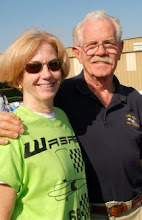We had an amazing opportunity recently to fly arguably the most operational electric airplane out there. Dale Kramer is a master builder of all kinds of interesting projects. His shop was extensive and impressive. He designed the Lazair in the 70’s during the boom in the ultra-light industry. Over the next several years the factory he set up sold 1200 of the airplane to enthusiasts from all over the world. Dale became interested in other types of flying (heavy lift airships, competition soaring) and separated himself from the Lazair. But recently the electric aircraft boom has inspired Dale to dust off his Lazair. The resulting set of experiments resulted in a new chapter for the design and perhaps for general aviation. Dale’s final iteration included hanging two Joby electric motors from the Lazair’s nacelles replacing the two JPX two strokes he had flown behind for years. When he put this new configuration on floats he had the first electric seaplane, a terribly practical electric airplane, and one heck of a beach toy. I called Dale after seeing the airplane at Oshkosh. I was hoping to learn more about the switch to electric and where he thought electrics could go. When he responded with an invitation to visit his home in western NY and “find out for myself” it was just a matter of buying the tickets. In the three days we spent with Dale and Carmen on Keuka Lake the Electric Lazair was flown almost twelve hours total by six different pilots in many different atmospheric and water conditions. We walked away with a much better understanding of this new way to propel aircraft and with big smiles on our faces.
Could electric power plants change full size aviation the way they did r/c? The shift to electric from glow power in RC aircraft has drastically improved accessibility, ease of maintenance, and in general relieved the boundaries of entry to that sport. Before electrics even the most experienced RC pilot might spend ten minutes getting his glow engine to start on his model, and he would most certainly smell like glow fuel when he was done. With modern electric models an operator no longer has to spend all that time and energy dealing with the powerplant. I wondered if that would be the case with electric man carrying airplanes.
During the twelve hours of flying I witnessed no power plant maintenance. The Joby motors performed reliably without a hiccup and we always flew within five minutes of the batteries finishing charging. During that same three days some airframe maintenance was performed. The beaching gear required some regular greasing (about once a day), and an excited pilot bent the recently added prototype ‘short pilot’ rudder pedal heel supports which had to be bent back. In general the airframe required more maintenance than the motor but neither required much maintenance at all (just like an electric RC airplane). If you compare that to a brand new Lycoming 360 you may not be impressed by the lack of maintenance even though you certainly would have checked the oil or fiddled with some loose baffling during that 12 hours of flying, however if compared to the typical troublesome two strokes that might be on an airplane like this you should definitely be impressed. The charging was also carefree and easy (Dale’s charging and docking infrastructure was very mature). It became common to forget to keep someone within sight of the charging airplane.
Could we ever get comfortable using RC heritage hardware in man rated operations? With all these little electric RC airplanes being sold today the price of the associated equipment is down significantly. It becomes very easy to adapt that hardware to full scale applications and take advantage of the low cost and high availability. But can we ever get comfortable flying in something designed to be a toy and therefore cheap and not necessarily safe.
The RC heritage parts of this airplane were the batteries, the visual tachometers, the propellers, the linear pots for throttle signal, and the thermo couples for motor temperature monitoring. I do not consider the Joby motors and controllers to be RC hardware (they appear to be produced to a higher standard than common RC). The safety critical RC components were the batteries (fire risk) and the propellers (pilot’s legs in prop arc) both were off the shelf items available at any online hobby store. Both the batteries and the propellers performed flawlessly. The visual tachometers were not safety critical nor were they completely reliable but were plenty adequate for the mission. The temperature monitoring of the motors was out of calibration but was reliable for all of the flying. The throttle signal pots were also trouble free. In general I found it easy to forget that I was depending on hardware designed for toys and I would be comfortable designing future aircraft to rely on such hardware. My only complaint was that the hard starting that Dale opted to use for the motor controller would probably have been fine in an RC was very annoying in the manned application (Dale agreed and commented he was working on a solution).
Is operation of a single engine recip comparable to a multi motor electric? Operating a twin engine airplane is significantly more complicated than operating a single engine one. Electric motors being developed for RC applications are small and therefore one would need several to get enough power to replace your recip (most electric aircraft concepts involve several motors). Does the simplicity of electric motor operation (single lever control) make electrics simple enough that we can overlook using multi engine platforms and take advantage of the many small cheap motors that are available?
The twin motor installation on the Lazair required two power lever controls (left motor, right motor) and six gauges (two tachs, two motor temps, and two voltmeters). This compares with three levers in a C-150 (throt, mixture, carb heat) and 5 gauges (tach, oil press, oil temp, cyl temp, fuel level). Say nothing for engine out behavior; the amount of systems and controls to monitor for a pilot is very comparable. If you extrapolate that the number of moving parts is down considerably from a recip to an electric perhaps you can ignore engine out behavior (as it becomes very unlikely), but either way the pilot workload during normal operations is comparable.
Battery level turned out not to be a problem at all. Dale briefed that we would launch with 67 volts a side, and land before 57.0 volts. While this makes sense on the ground the first thing you notice in the air is that the voltage the batteries make depends on the current that is being drawn by the motors. So when Dale says to land at 57 volts the question is what power setting should I be at when I make that measurement. His response was to measure at cruise power. While this sounds very complicated flight times were remarkably consistent (40 to 50 minutes) and so was the measured energy remaining upon landing (the chargers typically found 10-15%). This was despite a wide bodyweight envelope (125-250lbs) and the dynamic conditions of a seashore environment (thermal and slope lift, rotors, rain and sink, and winds 0-17 mph). The tachometer was very useful to maintain motor output throughout the burn, and therefore maximize efficiency. The commanded power required to maintain motor output increases as the battery voltage drops. By maintaining RPM you could maintain power output which simplified everything (Dale installed the visual tachometers for this task).
Besides some time in an Airbike, most of my experience as PIC has been in aircraft significantly heavier than the Lazair. As a result I was continually impressed by the details of this aircraft. The first thing you notice about the Lazair is the wing. Typically an ultra-light will have a Hershey bar wing and a conventional tail. The Lazair has neither, instead it has a long lovely tapered wing with an aluminum polished leading edge and spar. This spar and leading edge form a D-section which makes up the majority of the structure of the wing. The next thing you notice is the exotic inverted V tail feathers. The combination means an airplane with looks that are far from that of your average ultra-light. When I flew the airplane I was immediately impressed by the light control forces in all three axis. In pitch and roll the aircraft is very responsive and in general felt solid. The rudders are not very powerful and the airplane is marginal directionally, this is made worse by the pilots head being in the flow field of the motors which takes away all wind based slip indication. Dale warned new pilots that the aircraft would not turn without rudder at low speeds until the ailerons are returned to neutral after establishing a bank angle (low directional stability and significant adverse yaw) and I found this to be accurate, though I am confident that the floats did not help. The airplane handled best between 35 and 40 mph and stalled about 28 mph. The fastest I flew the airplane was 47 mph and it handled fine at that speed. As a flight test dork I was fascinated by the handling characteristics of the airplane (probably a product of my limited ultra-light experience) but was probably over thinking it. The airplane is a joy to fly, and the configuration is efficient and aesthetically pleasing. The float handled fine in seas from near glass to 1.5’ swells and chop.
With the electric amphibious Lazair Dale and Carmen have changed the way that we look at recreational aviation. By going electric the noise level, the filth, and thereby the fun of the medium improved significantly, both for the operator, and for the uninvolved public. By taking the operation off an airport the transition was complete. There was no anxiety about making it back to the runway, about landing out, or about winds shifting to a crosswind. Flying the airplane was more like a spin on a jet ski than operating a complicated flying machine. The best evidence of which was the ear to ear grin that every pilot had as they taxied back to the dock. It still remains to be seen whether the electric makes sense for uses beyond recreational flying. After this weekend I am confident that much like the explosion of the RC aircraft industry associated with the move to cheap and available electrics, the same thing is possible in the full size recreational aircraft, especially if we can continue to adapt that RC hardware for man carrying electric aircraft. What are you working on tonight?





























